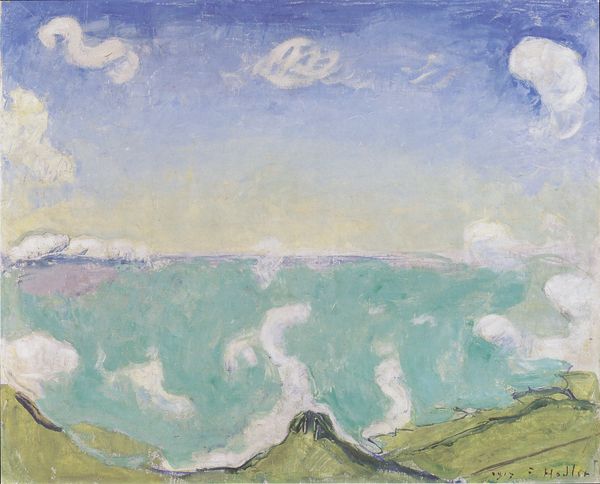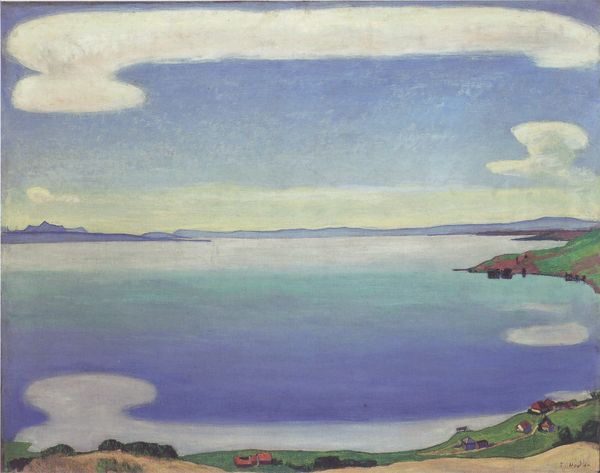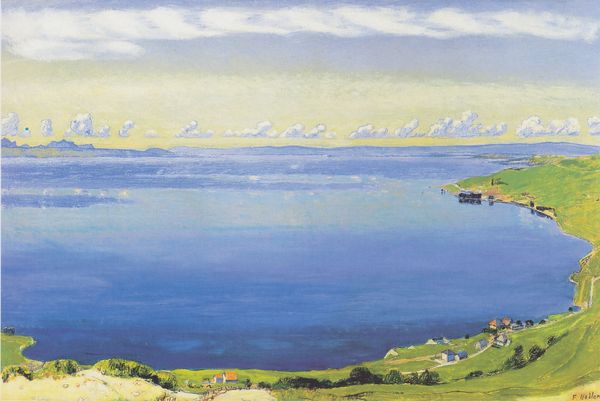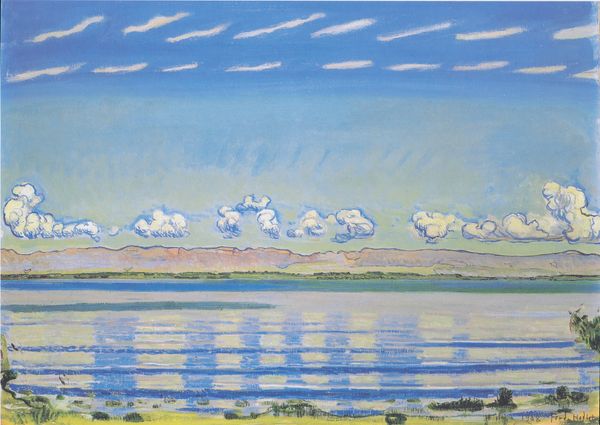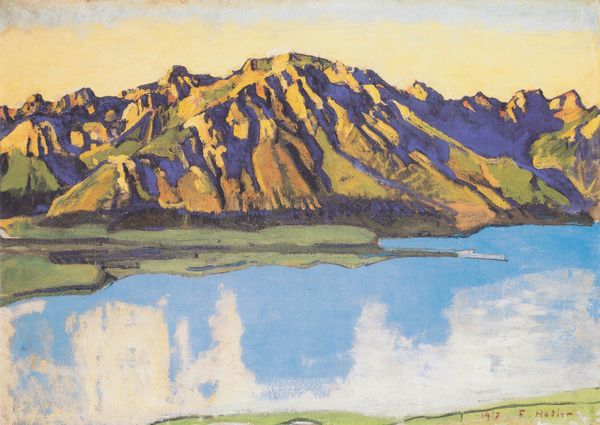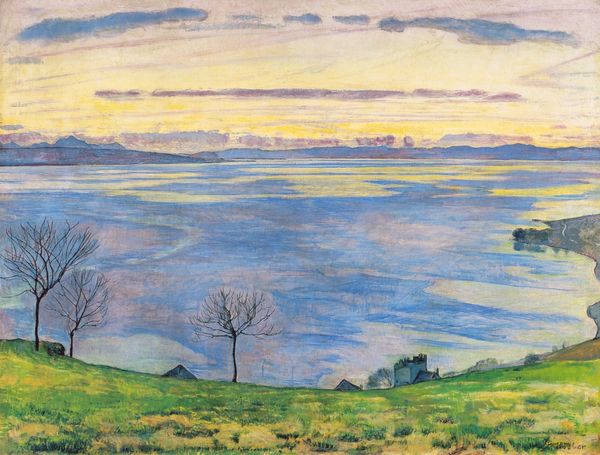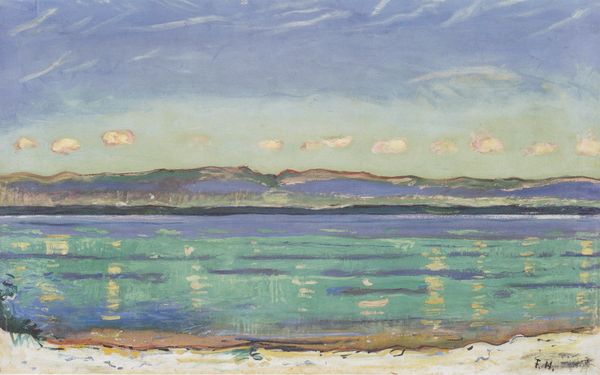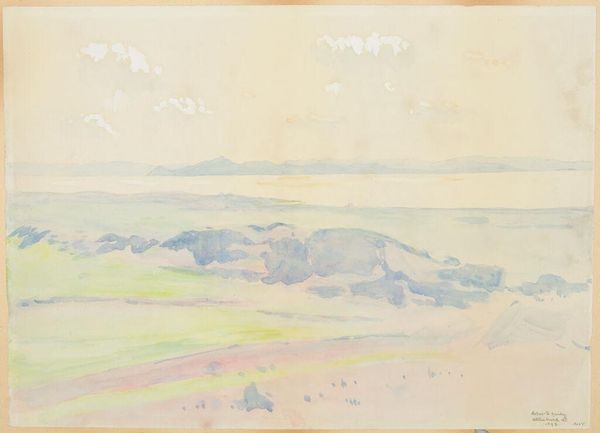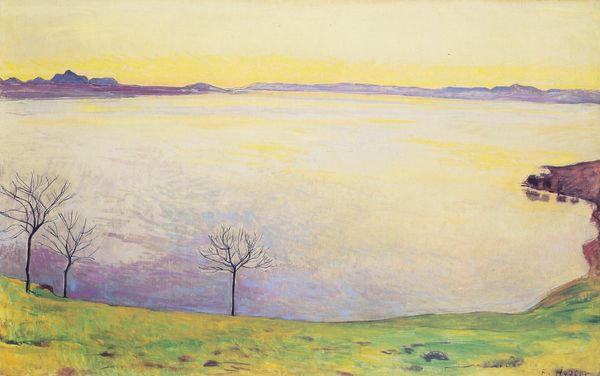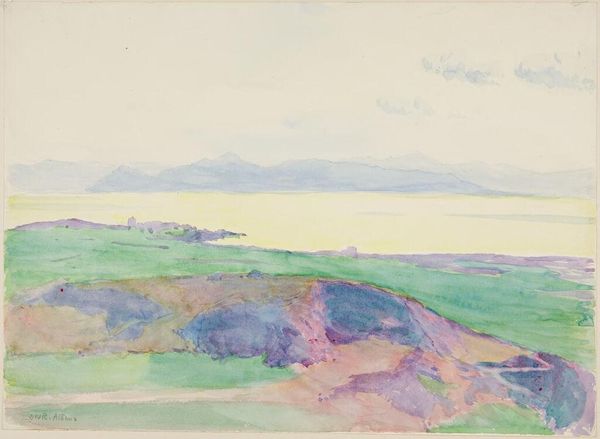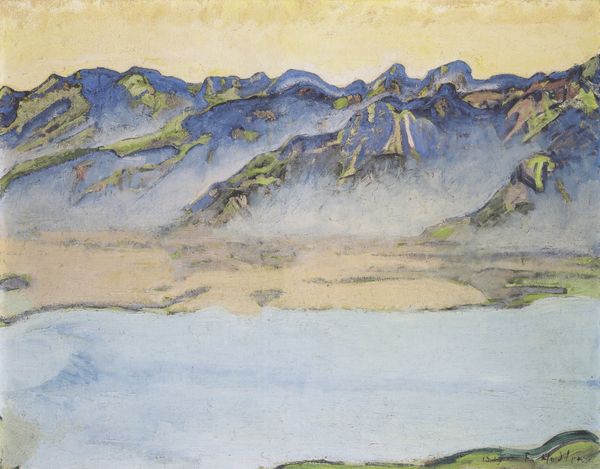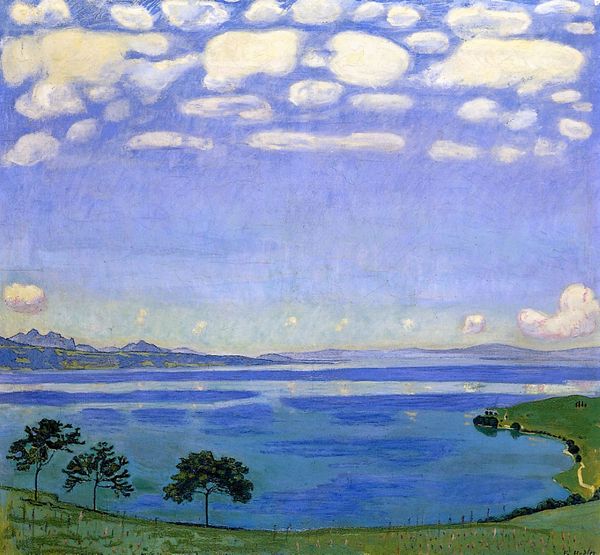
Dimensions: 65 x 81 cm
Copyright: Public domain
Art Historian: Before us hangs Ferdinand Hodler’s "Lake Geneva from the Caux," created in 1917, towards the end of his life. Curator: It strikes me immediately as rather… restful. The almost uniform application of the oil paint flattens everything, almost like fresco. Not much textural variation at all. Art Historian: Restful is a perfect word. Water is so often a symbol of peace, of reflection, isn’t it? Hodler painted this view repeatedly as he was dying. The lake, the mountains—they were his constant companions. Curator: Yes, but look at how the lake almost vibrates with a slightly unnatural teal. There’s an undercurrent, maybe even something unsettling in that color choice against those thick daubs of paint in the sky. The paint itself almost seems hastily applied, particularly those clouds, but what I wonder about are his materials during wartime. Where were they sourced, who produced them? Art Historian: That stark teal can represent a thinning of the veil between worlds. Consider that 1917 was a tumultuous year, both for the world and personally for Hodler. The symmetry he often employed in his work is softened here, as if the solid structures of his worldview were beginning to dissolve, echoing loss and reflection in a modern vision of paradise lost. The repetition is fascinating. Curator: Fascinating indeed. But repetitive processes were also a feature of the manufacture of art supplies; how does industrial production impact the individualized experience Hodler conveys here? This wasn’t a lone endeavor but part of a larger economic network. Also, that the vantage point is from an elevated, possibly bourgeois space, shifts its understanding towards privilege and spectatorship. Art Historian: Perhaps...but perhaps also toward a desire for transcendence through memory. Whatever Hodler’s social position, the lake itself remained unchanged and available to all—as a visual echo of eternity and perhaps faith, if only in the visual. Curator: A fitting point on which to pause; the social and the eternal—it seems as though they are more entwined than at first glance. Art Historian: Agreed. Hodler presents us with something apparently simple, yet rich with personal and collective symbolism.
Comments
No comments
Be the first to comment and join the conversation on the ultimate creative platform.
